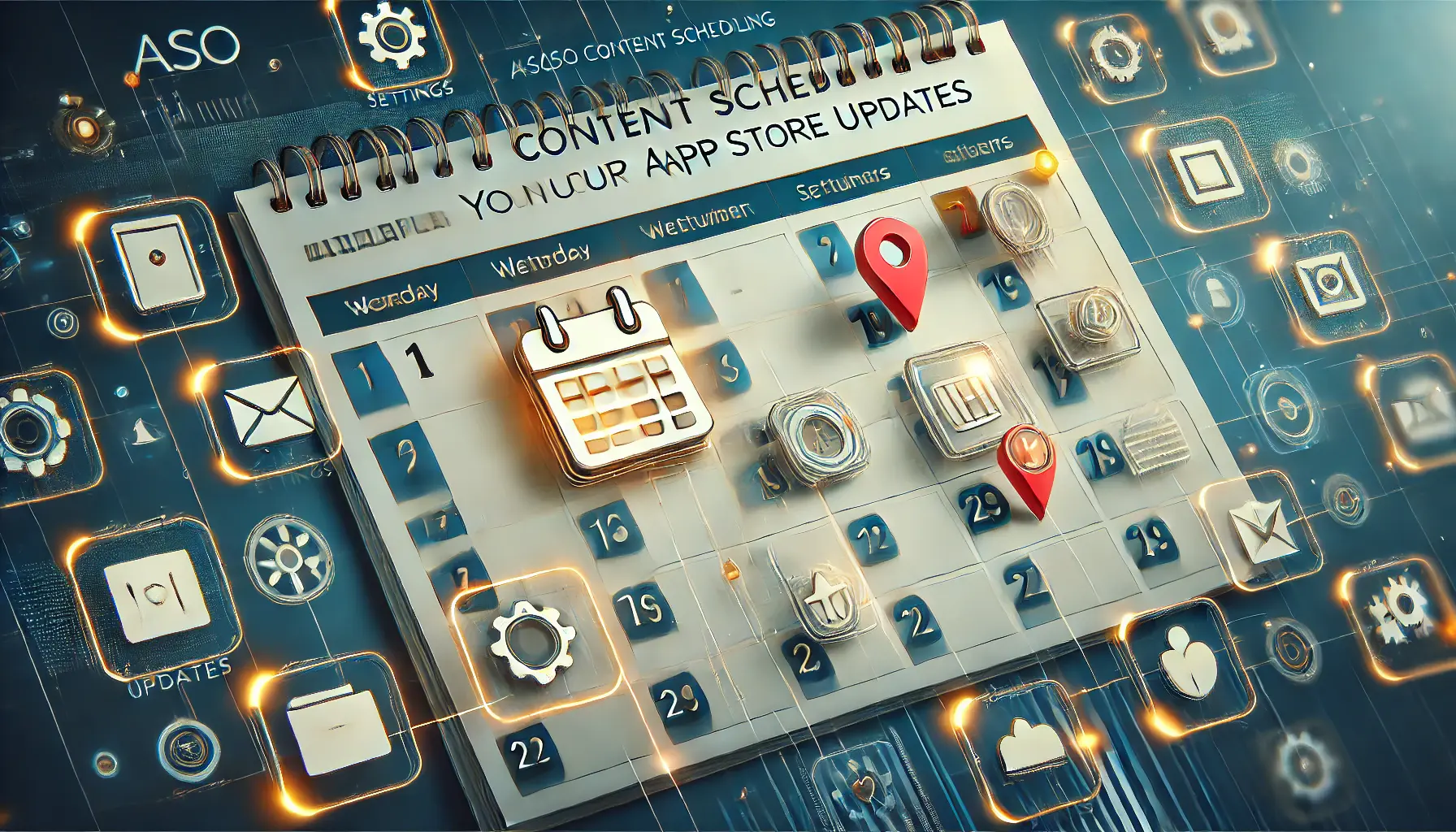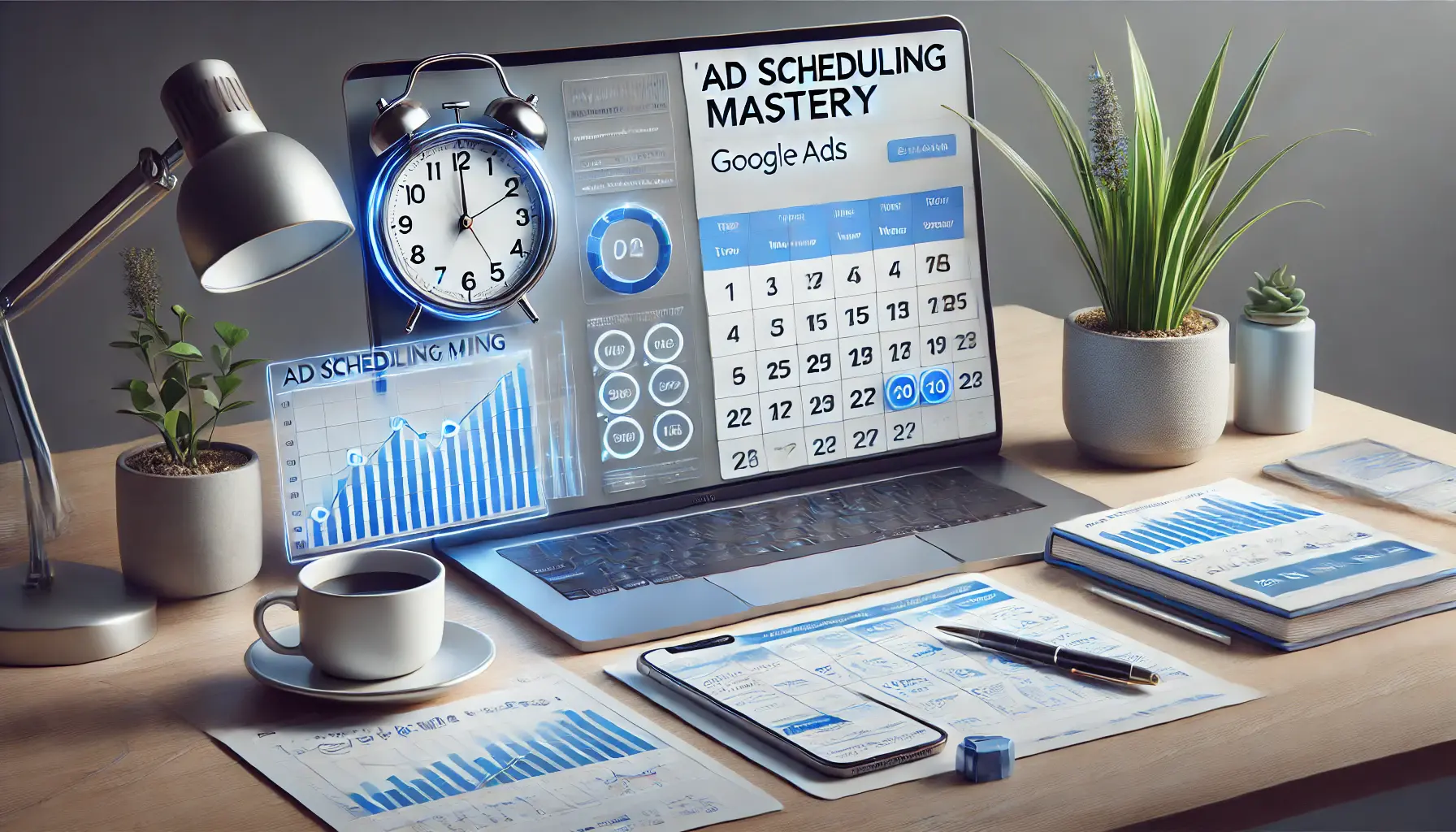In today’s digital marketing landscape, the strategic placement of advertisements can significantly influence the success of online campaigns.
Ad scheduling, a pivotal component within the realm of Apple Search Ads Campaign Structure, emerges as a game-changer for marketers aiming to optimize their advertising efforts.
This technique allows advertisers to pinpoint the most opportune moments to display their ads, ensuring they reach their target audience at the right time.
The essence of ad scheduling lies in its ability to enhance ad visibility, improve engagement rates, and ultimately drive conversions, making it an indispensable tool in the arsenal of digital marketing strategies.
Understanding the mechanics of ad scheduling and its impact on campaign performance requires a deep dive into the intricacies of consumer behavior and digital consumption patterns.
By aligning ad displays with peak user activity times, marketers can significantly increase the likelihood of their ads being seen and interacted with.
This strategic alignment not only maximizes the return on investment (ROI) but also elevates the overall efficiency of advertising campaigns.
In the following sections, we will explore the multifaceted benefits of ad scheduling, its implementation strategies, and the profound influence it wields on campaign success.
- Introduction to Ad Scheduling
- Implementing Ad Scheduling in Campaigns
- Challenges and Solutions in Ad Scheduling
- Advanced Ad Scheduling Strategies
- Integrating Ad Scheduling with Other Marketing Efforts
- Measuring and Analyzing Ad Scheduling Performance
- Future Trends in Ad Scheduling
- Conclusion: Harnessing the Power of Ad Scheduling for Campaign Success
- Ad Scheduling FAQ
Introduction to Ad Scheduling
What is Ad Scheduling?
Ad scheduling, often referred to as dayparting, is a feature that allows advertisers to specify the days and times their ads are shown to potential customers.
This targeted approach enables the delivery of ads during periods of high user engagement, thereby increasing the chances of ad interaction and conversion.
The flexibility of ad scheduling means that campaigns can be tailored to match the lifestyle and online habits of the target audience, ensuring that ads are not just seen but are also relevant and timely.
The implementation of ad scheduling involves a thorough analysis of audience behavior, including when they are most active online and their peak times for making purchasing decisions.
By leveraging this data, advertisers can craft a schedule that aligns perfectly with these windows of opportunity, thereby optimizing their ad spend and enhancing campaign performance.
Benefits of Ad Scheduling
The advantages of ad scheduling extend beyond mere visibility.
By ensuring that ads appear at the most opportune moments, businesses can achieve a higher engagement rate, leading to an increase in click-through rates (CTRs) and conversions.
This targeted approach not only conserves budget by reducing wasted impressions but also contributes to a more personalized advertising experience for the audience.
Furthermore, ad scheduling allows for the strategic allocation of ad spend during peak business hours or special events, maximizing the impact of advertising efforts.
Another significant benefit of ad scheduling is its contribution to competitive advantage.
In highly saturated markets, the ability to display ads at optimal times can set a brand apart, capturing the attention of potential customers before competitors do.
This strategic timing ensures that the brand remains top-of-mind for consumers, thereby increasing brand recall and loyalty.
Ad scheduling empowers advertisers to enhance campaign performance by displaying ads at times when their audience is most likely to engage, leading to improved ROI and competitive advantage.
Implementing Ad Scheduling in Campaigns
Understanding Your Audience
Before diving into ad scheduling, it’s crucial to gain a deep understanding of your target audience’s online behavior.
This involves analyzing their daily routines, peak activity times, and the devices they use to access the internet.
Such insights can be gleaned from analytics tools, which provide data on user engagement patterns, allowing advertisers to make informed decisions about when to schedule their ads.
Key factors to consider include:
- The time of day your audience is most active online.
- Days of the week with the highest engagement rates.
- Seasonal trends that may affect user behavior.
Setting Up Ad Schedules
Once you have a clear understanding of your audience’s habits, the next step is to set up your ad schedules accordingly.
This process varies across different advertising platforms but generally involves selecting the campaign you wish to apply the schedule to and specifying the desired days and times for your ads to run.
It’s important to be as precise as possible to ensure your ads reach your audience at the most effective times.
Steps for setting up ad schedules typically include:
- Accessing the campaign settings in your advertising platform.
- Navigating to the ad schedule or dayparting section.
- Choosing the specific days and times you want your ads to appear.
- Applying these settings to your campaign.
Optimizing Ad Schedules for Maximum Impact
Ad scheduling is not a set-it-and-forget-it strategy.
Continuous optimization is key to ensuring your campaigns remain effective over time.
This involves regularly reviewing campaign performance data to identify which schedules are yielding the best results and adjusting your ad timings accordingly.
Additionally, staying attuned to any changes in your audience’s behavior or external factors that could influence engagement is crucial for maintaining the relevance of your ad schedules.
Effective optimization strategies include:
- Conducting A/B tests with different ad schedules to determine what works best.
- Adjusting ad schedules based on seasonal changes or special events.
- Using advanced targeting options to further refine when and where your ads are shown.
Regularly updating and optimizing your ad schedules based on performance data and audience insights can significantly enhance the effectiveness of your campaigns.
Challenges and Solutions in Ad Scheduling
While ad scheduling offers numerous benefits, it also comes with its set of challenges.
These obstacles can range from determining the optimal times to display ads, to adjusting strategies based on unforeseen market changes.
However, with every challenge comes a solution, and understanding these can help advertisers navigate the complexities of ad scheduling more effectively.
Identifying Optimal Ad Times
Finding the perfect timing for your ads is often a trial-and-error process.
The digital landscape is dynamic, with audience behaviors shifting due to various factors such as seasonality, market trends, and even global events.
The key to overcoming this challenge lies in leveraging data analytics and audience insights.
By continuously monitoring campaign performance and being adaptable to changes, advertisers can identify patterns and adjust their ad schedules accordingly.
Solutions include:
- Utilizing analytics tools to gather data on audience engagement.
- Implementing A/B testing to compare the performance of different ad schedules.
- Staying informed about industry trends that could influence consumer behavior.
Adapting to Market Changes
The digital marketing environment is susceptible to rapid changes, which can sometimes render an existing ad schedule less effective.
Advertisers must remain agile, ready to modify their strategies in response to market shifts.
This agility ensures that ad campaigns continue to reach their target audience efficiently, without wasting budget on poorly timed ads.
Strategies for adaptation include:
- Setting up Google Alerts or similar notifications for industry news that could impact consumer behavior.
- Engaging with social media and online forums to stay ahead of emerging trends.
- Regularly reviewing campaign analytics to quickly identify shifts in audience engagement.
Managing Multiple Time Zones
For businesses targeting a global audience, managing ad schedules across multiple time zones can be a daunting task.
Ads need to be displayed at optimal times for each target region, which requires careful planning and execution.
The solution to this challenge involves the use of sophisticated ad management tools that allow for the customization of ad schedules by region.
Additionally, understanding the prime activity hours for each target market is crucial.
Effective management strategies include:
- Using advertising platforms that offer time zone adjustment features.
- Creating separate campaigns for different regions to tailor ad schedules more precisely.
- Collaborating with local teams or partners to gain insights into the best times to run ads in their respective time zones.
Adapting quickly to changes and utilizing advanced tools and strategies can help overcome the challenges of ad scheduling, ensuring that your campaigns remain effective and efficient.
Advanced Ad Scheduling Strategies
For advertisers looking to maximize the effectiveness of their campaigns, employing advanced ad scheduling strategies is key.
These strategies go beyond basic dayparting, incorporating sophisticated techniques to align ad displays with audience behavior and preferences.
By leveraging these advanced tactics, advertisers can significantly enhance campaign performance and achieve a higher return on investment.
Behavioral Targeting and Ad Scheduling
Integrating behavioral targeting with ad scheduling allows advertisers to deliver ads based on users’ past online activities and preferences.
This approach ensures that ads are not only shown at the right time but are also highly relevant to the audience.
To implement this strategy, advertisers can use data from website analytics, customer surveys, and social media interactions to understand their audience’s habits and preferences.
Key steps include:
- Segmenting your audience based on their online behavior and interests.
- Creating personalized ad schedules for different audience segments.
- Monitoring campaign performance to refine targeting and scheduling as needed.
Utilizing AI for Optimal Scheduling
Artificial intelligence (AI) technologies offer powerful tools for optimizing ad schedules.
AI algorithms can analyze vast amounts of data to predict the best times to display ads, taking into account factors such as user engagement patterns, conversion rates, and even the impact of external events on consumer behavior.
By automating the ad scheduling process, advertisers can ensure their campaigns are always optimized for maximum impact.
Benefits of using AI in ad scheduling include:
- Automated analysis of engagement data to identify optimal ad times.
- Dynamic adjustment of ad schedules based on real-time performance metrics.
- Increased efficiency and effectiveness of ad campaigns.
Seasonality and Event-Driven Scheduling
Seasonal trends and specific events can have a significant impact on consumer behavior, making them important considerations for ad scheduling.
Advertisers can capitalize on these periods by adjusting their ad schedules to coincide with increased consumer activity.
This might involve ramping up ad displays during holiday seasons, major sporting events, or industry-specific peak times.
To leverage seasonality and events effectively, consider:
- Identifying key dates and periods of increased consumer activity related to your industry.
- Planning ad campaigns well in advance of these dates to capture audience interest.
- Adjusting ad budgets to accommodate increased ad spend during peak periods.
Advanced ad scheduling strategies, including behavioral targeting, AI optimization, and seasonality adjustments, can significantly boost campaign performance by ensuring ads are displayed to the right audience at the most opportune times.
Integrating Ad Scheduling with Other Marketing Efforts
For a holistic marketing approach, integrating ad scheduling with other marketing efforts can amplify the overall impact of your strategies.
This integration ensures that your messaging is consistent across all channels and that your audience receives a unified brand experience.
By coordinating ad schedules with email campaigns, social media posts, and other marketing activities, advertisers can create a seamless customer journey that guides users towards conversion.
Coordinating with Email Marketing
Email marketing campaigns are a vital component of digital marketing strategies.
By aligning ad schedules with email blasts, businesses can reinforce their message and increase the likelihood of engagement.
For instance, scheduling ads to run shortly before sending out a promotional email can warm up the audience, making them more receptive to the email content.
- Plan your email campaign schedule in advance.
- Set ad schedules to precede major email blasts by a few hours or days.
- Analyze the performance to adjust the timing for future campaigns.
Syncing with Social Media Activities
Social media platforms offer another touchpoint to engage with your audience.
Synchronizing ad schedules with peak social media activity times can enhance visibility and engagement.
Additionally, running ads in conjunction with social media campaigns or events can create a buzz, driving more traffic to your social media profiles and website.
- Identify peak activity times on your social media channels.
- Coordinate ad schedules to match these peak times, especially during campaigns or events.
- Use social media analytics to refine your ad scheduling strategy.
Leveraging Content Marketing Synergies
Content marketing plays a crucial role in attracting and retaining customers.
By scheduling ads that promote specific content pieces, such as blog posts or videos, at times when your audience is most likely to consume content, you can significantly increase content engagement and drive traffic to your site.
This strategy not only boosts the effectiveness of your content marketing efforts but also enhances the overall impact of your ad campaigns.
- Align ad schedules with your content publication calendar.
- Promote new content through ads at peak engagement times.
- Monitor content performance to identify the best times for future promotions.
Integrating ad scheduling with other marketing efforts ensures a cohesive and consistent marketing strategy that leverages multiple channels for maximum impact.
Measuring and Analyzing Ad Scheduling Performance
To ensure the ongoing success of ad scheduling strategies, it’s essential to measure and analyze their performance meticulously.
This analysis not only highlights the effectiveness of current schedules but also identifies areas for improvement.
Utilizing the right metrics and tools can provide deep insights into how ad schedules impact overall campaign performance and ROI.
Key Performance Indicators (KPIs) to Track
Several KPIs are crucial for evaluating the success of ad scheduling efforts.
These include click-through rates (CTR), conversion rates, cost per acquisition (CPA), and return on ad spend (ROAS).
By monitoring these metrics, advertisers can gauge the effectiveness of their ad schedules and make data-driven decisions to optimize their campaigns.
- Click-Through Rate (CTR): Measures the effectiveness of ads in capturing audience attention.
- Conversion Rate: Indicates the percentage of ad clicks that result in a desired action, such as a purchase or sign-up.
- Cost Per Acquisition (CPA): Calculates the cost associated with acquiring a new customer through ads.
- Return on Ad Spend (ROAS): Assesses the profitability of ad campaigns.
Utilizing Analytics Tools for In-depth Analysis
Advanced analytics tools play a pivotal role in measuring ad scheduling performance.
Platforms like Google Analytics, Facebook Insights, and other ad management tools offer comprehensive data on campaign performance across different times and days.
These tools enable advertisers to drill down into the specifics of how ad schedules are influencing audience engagement and conversions.
- Set up custom reports to track performance metrics specifically related to ad scheduling.
- Analyze user behavior patterns to refine ad scheduling strategies.
- Use conversion tracking to directly correlate ad schedules with sales or leads.
Adjusting Strategies Based on Insights
The ultimate goal of analyzing ad scheduling performance is to refine and optimize your strategies.
Insights gained from performance data should inform adjustments to ad schedules, targeting parameters, and even creative elements.
Continuous optimization ensures that ad campaigns remain effective and efficient, maximizing ROI over time.
- Test different ad schedules to identify the most effective times for engagement and conversions.
- Adjust ad creative and messaging based on performance insights to better resonate with your target audience during specific times.
- Consider seasonal and market trends that may affect optimal ad scheduling times.
Regular analysis and optimization of ad scheduling strategies are essential for maintaining the effectiveness of your campaigns and achieving long-term success in digital advertising.
Future Trends in Ad Scheduling
The landscape of digital advertising is constantly evolving, with new technologies and consumer behaviors shaping the future of ad scheduling.
Staying ahead of these trends is crucial for advertisers seeking to maintain competitive advantage and maximize the effectiveness of their campaigns.
As we look to the future, several key trends are poised to influence ad scheduling strategies significantly.
Increased Personalization Through Machine Learning
Machine learning and artificial intelligence (AI) are set to revolutionize ad scheduling by enabling even more personalized and dynamic ad delivery.
These technologies can analyze vast amounts of data in real-time, predicting the optimal moments to display ads to individual users based on their unique behaviors and preferences.
This level of personalization will enhance user engagement and campaign performance.
- Integration of AI to predict user behavior and optimize ad schedules.
- Dynamic ad scheduling adjustments based on real-time data analysis.
- Enhanced targeting capabilities to deliver highly personalized ads.
Greater Emphasis on Cross-Channel Coordination
As consumers increasingly navigate across multiple digital platforms, the importance of cross-channel ad scheduling coordination will grow.
Advertisers will need to synchronize their ad schedules across various channels, such as social media, search engines, and email, to create a cohesive brand experience.
This coordination will ensure that messages are timely and consistent, regardless of where the audience engages.
- Development of tools for managing ad schedules across multiple platforms.
- Strategies for aligning ad timing with cross-channel marketing campaigns.
- Analytics solutions that provide a unified view of performance across channels.
Adaptation to Changing Consumer Privacy Norms
With increasing concerns over data privacy and the implementation of regulations like GDPR and CCPA, ad scheduling will need to adapt to these changing norms.
Advertisers will have to find a balance between personalization and privacy, ensuring that ad schedules are optimized without infringing on user privacy.
This may involve relying more on aggregated data and contextual targeting rather than individual user data.
- Shift towards privacy-friendly ad scheduling practices.
- Increased use of contextual and behavioral signals for scheduling ads.
- Adoption of privacy-compliant data analytics tools.
Ignoring the evolving trends in ad scheduling could result in missed opportunities and diminished campaign effectiveness in the rapidly changing digital advertising landscape.
Conclusion: Harnessing the Power of Ad Scheduling for Campaign Success
The strategic implementation of ad scheduling stands as a cornerstone in the architecture of successful digital advertising campaigns.
By aligning ad displays with the online behavior and preferences of the target audience, advertisers can significantly enhance the visibility and effectiveness of their campaigns.
The journey through understanding, implementing, and optimizing ad scheduling reveals its undeniable value in maximizing engagement, conversions, and ultimately, the return on investment.
Key Takeaways
Ad scheduling transcends mere timing; it embodies a dynamic approach to engaging with audiences at the most opportune moments.
The insights gleaned from this exploration underscore several critical takeaways:
- The necessity of a deep understanding of audience behavior to inform ad scheduling decisions.
- The importance of leveraging advanced technologies and strategies, such as AI and machine learning, to personalize ad delivery.
- The need for continuous analysis and optimization to keep pace with changing audience behaviors and market trends.
- The growing significance of cross-channel coordination in creating a cohesive advertising strategy.
- The imperative to adapt ad scheduling practices in response to evolving consumer privacy norms.
Looking Ahead
As we look towards the future, the landscape of ad scheduling is poised for further evolution, driven by advancements in technology and shifts in consumer behavior.
Advertisers who stay ahead of these trends, embracing innovation and flexibility in their ad scheduling strategies, will be best positioned to capture the attention of t
If you're seeking expertise in Apple Search Ads campaigns, visit our service page for professional management!
Ad Scheduling FAQ
Explore commonly asked questions about ad scheduling to enhance your campaign’s success.
Ad scheduling allows advertisers to specify days and times their ads are shown, optimizing for peak audience activity and improving campaign efficiency.
Yes, by targeting ads to appear during optimal times, ad scheduling reduces wasted spend and increases ROI by focusing on high-engagement periods.
Most campaign types on platforms like Google Ads and Facebook support ad scheduling, allowing for precise control over ad display times.
By aligning ad displays with audience online activity, ad scheduling enhances visibility, engagement, and conversion rates, driving campaign success.













